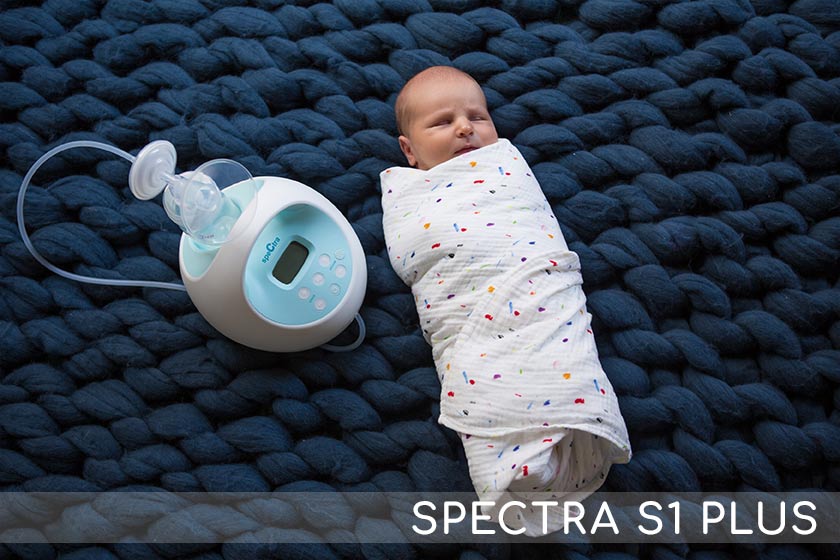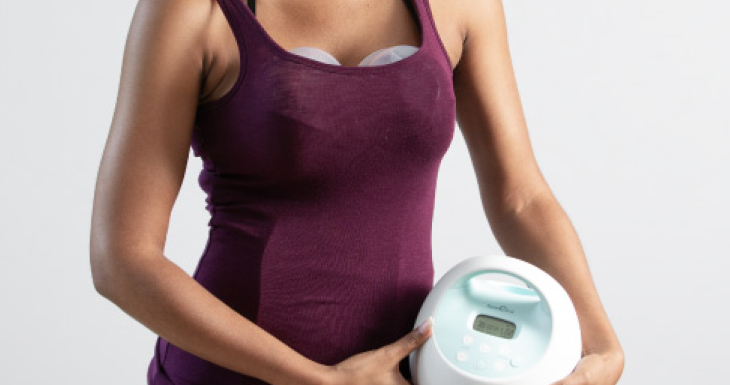Pumping 101
Melissa Portunato, IBCLC
The majority of breastfeeding mothers will express breastmilk during some part of their breastfeeding journey. Sometimes it can be when returning to work, taking a break while temporarily working on baby’s latch, or choosing to pump exclusively from the start. Breast pumping can be intimidating for new parents, but it doesn’t have to be that way! Establishing simple-to-follow pumping strategies can ease worry and maximize pumping sessions. With manageable planning guidelines and evidence-based education and support, families can continue to reach their breastfeeding goals. Choosing to express breastmilk will ensure your milk supply is protected, and your baby will continue to receive the magical nutrition only you can provide.
When to Start Pumping
If your baby is growing well and has unlimited access to the breast, there is no need to start pumping right away, but this really depends on your breastfeeding goals and when you will begin to be separated from your baby. If you are returning to work at 12 weeks, you can start pumping at 3-4 weeks after birth but keep in mind the very early weeks are for establishing your milk supply at the breast and bonding with plenty of skin to skin. There will always be instances where pumping will be necessary right from the start, like preterm infants or unexpected medical emergencies.
If nursing is going well at the breast, start with a short pumping session about 5 to 7 minutes after the morning or evening nursing session. The best time to pump will be about 30 minutes after nursing your baby. Pump once a day at first and then gradually increase sessions according to your breastfeeding goals. If you are exclusively pumping aim for 6-8 / 20 min pumping sessions per day for a daily total of 120 min.
Normal Pumping Output
The newborn belly is super tiny. Studies show exclusively breastfed babies from 1 to 6 months old will consume an average of 25 – 30 ounces per day. Depending on if you are pumping for a missed feeding or pumping in between feedings, you can expect to pump roughly 2 – 4 ounces. At first, when your production is ramping up, expect to pump less milk. It takes time and practice to get your body to respond to the pump, just like learning to nurse at the breast.
Check Flange Sizing
The Spectra Baby USA S1/2 and Synergy Pumps come with two sets of flanges – 24mm and 28mm. Spectra Baby USA flanges come in 16, 20, 24, 28, and 32 mm. Flanges are relatively inexpensive and completely worth the purchase to ensure you have the highest comfort level when pumping.
Finding the proper size for a breast flange is based on the diameter of the nipple, not the areola (the softer pigmented skin around the nipple). When your nipple is centered inside the flange tunnel before pumping, it should only have a few millimeters (2-3) of wiggle room around the nipple. The entire nipple should fit comfortably without much, if any, of the areola entering the tunnel before pumping. Nipple size can fluctuate and can vary from side to side. We recommend measuring before pumping or nursing then adding 2-3mm to the diameter. Here’s our helpful fitting flange guide.
Cycles, Settings, and More
Spectra’s Natural Nursing Technology utilizes customized vacuum and cycle patterns that closely mimic a baby nursing at the breast. This natural pumping experience provides productive, comfortable, successful pumping sessions and ultimately more milk in less time.
Try these Cycle Pumping Settings to get started with your Spectra breast pump:
Massage 70
Expression 54
Massage 70
Expression 38
*Vacuum should always be set to comfort, 5 min on each setting.
Research shows moms can yield about 30% more milk when stimulating their breasts while pumping. Using a hands-free bra will allow for easier “hands-on pumping.” Massaging and compressing your breasts while expressing will help you get the most out of your pumping session.
Cleaning and Milk Storage
The CDC recommends sterilizing all your pump parts for the very first time before initial use. There is no need to sterilize the tubing since it will never contact your milk or pump. Have a designated bin to wash your pump accessories after each use in warm soapy water and then air dry on a clean dish or paper towel. Using non-antibacterial soap is ideal to ensure you aren’t leaving any film on the flanges that can inhibit the natural secretion of your Montgomery Glands on your areola.
Keep your liquid gold safe for your baby by adhering to the CDC guidelines for storing and preparing expressed breast milk.
Have more questions on getting started with pumping? At Spectra Baby USA, we understand the need for support, schedule a complimentary consultation with us here or email us at ibclc@spectrababyusa.com.
We wish you all the best on your pumping journey and are here to support you every step of the way.



